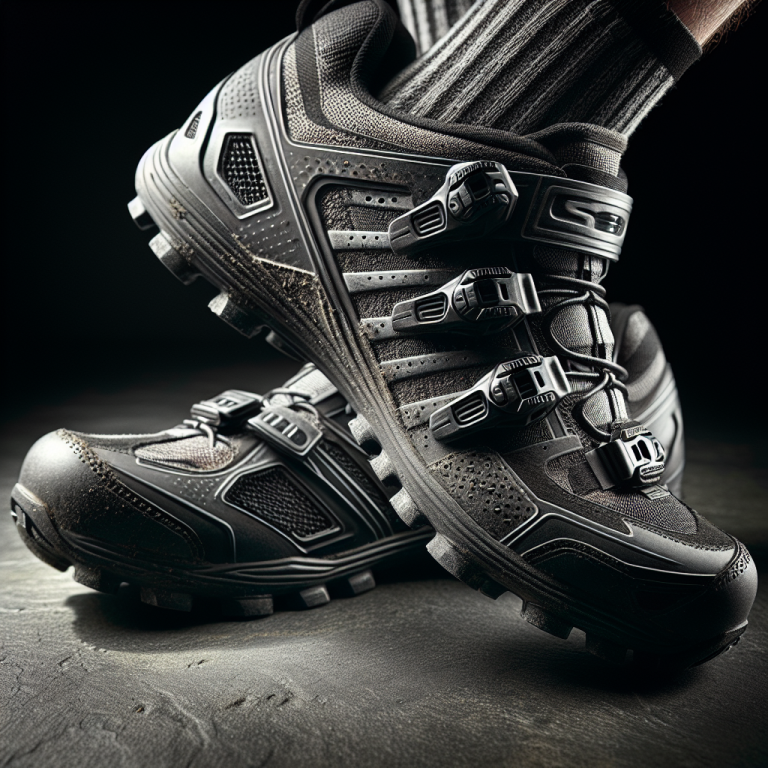If you’re looking for a fun and efficient way to improve your fitness levels, look no further than cycling. This popular activity not only offers a fantastic cardiovascular workout, but it also engages a wide range of muscle groups, making it a truly effective form of exercise. Whether you’re a beginner or a seasoned cyclist, hopping on a bike can provide numerous benefits, from burning calories and strengthening your legs to improving your overall endurance. So, if you’re ready to pedal your way to a healthier lifestyle, get ready to discover just how effective cycling can be for your fitness goals.
Table of Contents
ToggleHealth Benefits of Cycling
Cycling is an excellent form of exercise that offers numerous health benefits. One of the key benefits of cycling is improved cardiovascular health. Regular cycling helps to strengthen the heart and improve its ability to pump blood efficiently throughout the body. This, in turn, reduces the risk of developing cardiovascular diseases such as heart attacks and strokes.
Additionally, cycling helps to increase muscle strength and flexibility. As you pedal and push your legs against resistance, your leg muscles are engaged and strengthened. This not only improves your overall muscle tone but also enhances your ability to perform daily activities that require leg strength, such as walking or climbing stairs.
Furthermore, cycling enhances joint mobility. The rhythmic motion of cycling helps to lubricate the joints and improve their range of motion. This is particularly beneficial for individuals with conditions such as arthritis or joint stiffness, as it can help to reduce pain and increase their ability to move comfortably.
Lastly, cycling is an excellent way to boost endurance and stamina. Regular cycling sessions can help to improve your lung capacity and increase your overall ability to sustain physical activity for longer durations. This increased endurance not only allows you to cycle longer distances but also translates to improved performance in other activities, such as running or swimming.
Weight Loss and Cycling
If weight loss is one of your goals, cycling can be a highly effective tool. The act of cycling itself burns a significant amount of calories, making it an excellent choice for individuals looking to manage their weight. The number of calories burned during a cycling session depends on various factors such as intensity, duration, and terrain.
Furthermore, cycling can have a positive impact on your metabolism. Regular cycling sessions help to increase your metabolic rate, which means your body burns calories more efficiently even at rest. This can aid in weight loss and weight management efforts, as a higher metabolism helps you burn more calories throughout the day.
Moreover, cycling is a great way to combat obesity and reduce body fat. By engaging in regular cycling, you can create a calorie deficit, which occurs when you burn more calories than you consume. This calorie deficit leads to weight loss, including the reduction of body fat. Cycling is a low-impact exercise that can be easily incorporated into your daily routine to support weight loss goals.
Cycling for Mental Well-being
In addition to the physical benefits, cycling also provides numerous mental health benefits. First and foremost, cycling can help reduce stress and anxiety. The rhythmic motion and the focus required while cycling can provide a meditative and calming effect, allowing your mind to relax and alleviate stress.
Moreover, regular cycling has been linked to improved mood and mental clarity. The release of endorphins during exercise helps to uplift your mood and provide a sense of well-being. This can be particularly beneficial for individuals dealing with depression or mood disorders.
Additionally, cycling has been shown to enhance cognitive function. The increased blood flow and oxygen supply to the brain during exercise can improve cognitive abilities such as memory, attention, and problem-solving skills. Incorporating cycling into your routine is a simple and enjoyable way to sharpen your mental capabilities.
Lastly, cycling promotes better sleep quality. Engaging in regular exercise such as cycling has been shown to improve the quality and duration of sleep. By expending energy during your cycling sessions, you will feel more tired and find it easier to fall asleep at night. Adequate sleep is essential for overall well-being, and cycling can be an effective way to achieve better sleep patterns.
Cycling as a Low-Impact Exercise
One of the major advantages of cycling is that it is a low-impact exercise. Unlike activities such as running or jumping, cycling puts minimal stress on the joints. This makes it an ideal exercise for individuals who may have joint pain or stiffness, or who are recovering from injuries.
The gentle and fluid motion of cycling allows for smooth movement of the joints, reducing the risk of impact-related injuries. This is particularly beneficial for individuals with conditions such as arthritis, as it provides a safe and effective way to exercise and maintain joint health.
Furthermore, cycling is suitable for people of all fitness levels. Whether you are a beginner or an experienced athlete, you can adjust the intensity and duration of your cycling sessions to suit your fitness level and goals. It is a customizable exercise that allows you to challenge yourself while still being gentle on your body.
Building Lower Body Strength
Cycling is a fantastic way to engage and strengthen the major leg muscles. As you pedal, the muscles in your thighs, calves, and glutes are activated and worked. Over time, regular cycling helps to tone and strengthen these muscles, providing you with a more sculpted and defined lower body.
In addition to the visual benefits, building lower body strength through cycling has numerous functional advantages. Strong leg muscles not only improve your cycling performance but also enhance your ability to carry out everyday tasks such as walking, lifting, and climbing stairs. By incorporating cycling into your routine, you can develop strong and functional lower body muscles.
Moreover, cycling is beneficial for bone health. The resistance placed on the bones during cycling helps to stimulate bone growth and increase bone density. This is particularly important for individuals at risk of osteoporosis or other bone-related conditions. Regular cycling can help to maintain and improve bone health, reducing the risk of fractures and injuries.
Improving Balance and Coordination
Cycling is not only an excellent cardiovascular exercise but also a great way to improve balance and coordination. The act of cycling requires constant adjustments to maintain balance and stability. By regularly practicing cycling, you can enhance your proprioception, which is the body’s ability to sense and control movement.
Enhancing proprioception through cycling leads to better balance and stability. This can be especially beneficial for older adults or individuals recovering from injuries, as it helps to prevent falls and improve overall coordination. Additionally, the coordination and motor skills developed through cycling can carry over to other activities, leading to improved overall physical performance.
Cardiovascular Fitness and Cycling
Cycling is a highly effective aerobic workout that promotes cardiovascular fitness. When cycling, your heart rate increases, and you breathe deeper, providing a workout for your heart and lungs. This strengthens your cardiovascular system, leading to a healthier heart and improved lung capacity.
Regular cycling sessions help to increase your lung capacity, allowing you to take in more oxygen during physical activities. This increased lung capacity translates to better overall endurance and stamina, enabling you to perform better in various activities and sports.
Furthermore, cycling improves blood circulation. The increased blood flow that occurs during cycling helps to deliver oxygen and nutrients more efficiently to the muscles and organs throughout your body. This can lead to improved overall health and vitality.
Cycling for Joint Health
Cycling is a beneficial exercise for promoting joint health and reducing stiffness and joint pain. The smooth and fluid motion of cycling helps to lubricate the joints, reducing friction and minimizing discomfort. This is particularly valuable for individuals with conditions such as osteoarthritis, as it allows them to engage in physical activity with less strain on their joints.
Moreover, regular cycling helps to maintain joint flexibility. As you cycle, your joints go through a full range of motion, which helps to improve and preserve flexibility. This can be especially beneficial for individuals who may have limited joint mobility due to aging or sedentary lifestyles.
Lastly, cycling can help prevent conditions such as arthritis. By engaging in regular physical activity like cycling, you can strengthen the muscles around your joints and provide better support. This reduces the risk of developing arthritis and other joint-related issues, allowing you to enjoy an active and pain-free lifestyle.
Cycling as a Social Activity
In addition to the physical and mental health benefits, cycling can also be a social activity that promotes connections and community. Whether you join a cycling club, participate in group rides, or simply cycle with friends, cycling provides opportunities to meet like-minded individuals and form social connections.
Group rides and events offer the chance to share experiences, challenges, and achievements with fellow cyclists. This camaraderie can provide motivation, support, and a sense of belonging. Cycling with others can also make the activity more enjoyable and encourage you to push yourself further, leading to improved fitness and overall well-being.
Moreover, engaging in cycling as a social activity allows for exploring new routes and destinations together. This adds an element of adventure to your cycling journeys and provides opportunities for shared experiences and memories. By cycling as a group, you can foster relationships and create lasting friendships while enjoying the many benefits of cycling.
Tips for Effective Cycling
To make the most of your cycling experience, here are some helpful tips to keep in mind:
- Set achievable goals: Start with realistic goals and gradually increase the intensity and duration of your rides. This will help you stay motivated and track your progress.
- Vary intensity and duration: Mix up your cycling sessions by incorporating both high-intensity intervals and longer, steady-paced rides. This helps to challenge your body and prevent plateaus.
- Ensure proper bike fit and equipment: Make sure your bike is properly fitted to your body measurements and invest in quality equipment, such as a comfortable saddle and helmet. This will enhance your comfort and safety during rides.
- Prioritize safety precautions: Always wear a helmet and high-visibility clothing to ensure your safety on the road. Observe traffic rules, signal your intentions to other road users, and stay alert at all times.
- Learn and practice riding techniques: Familiarize yourself with proper cycling techniques, such as shifting gears, using brakes effectively, and maintaining a steady pace. This will improve your efficiency and overall cycling experience.
By following these tips, you can maximize the benefits of cycling and make it a rewarding and enjoyable part of your fitness routine. Remember to listen to your body and adjust your cycling sessions accordingly to ensure a safe and effective workout. Happy cycling!







